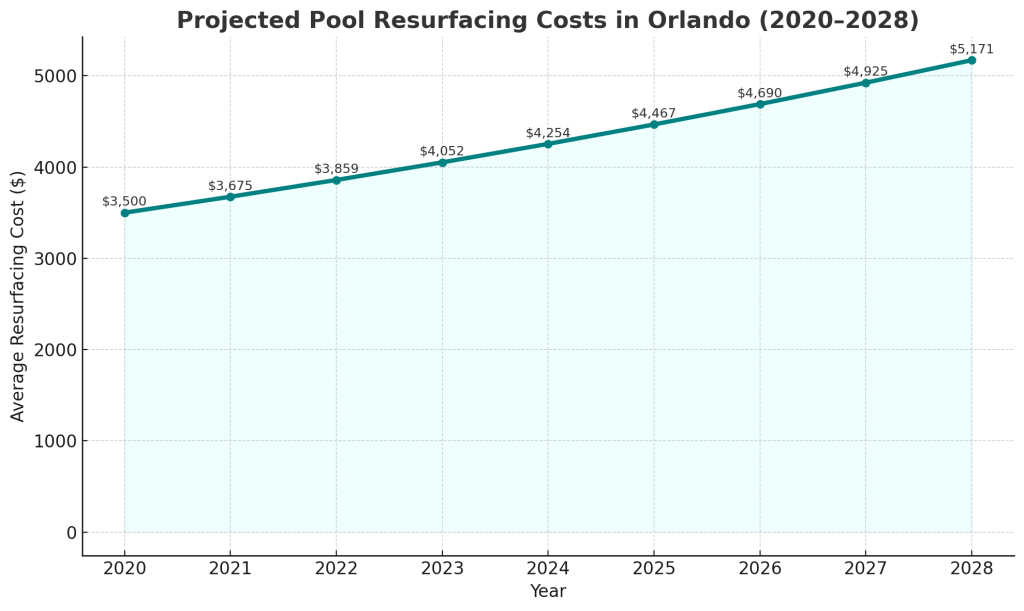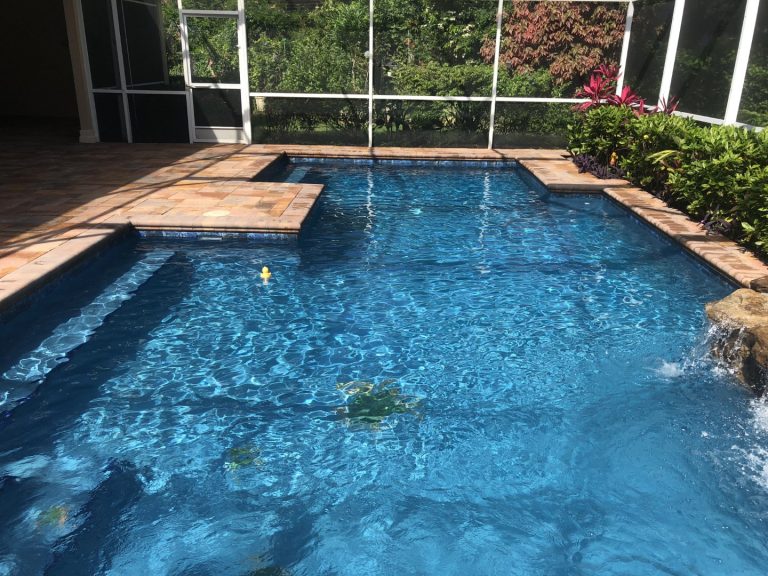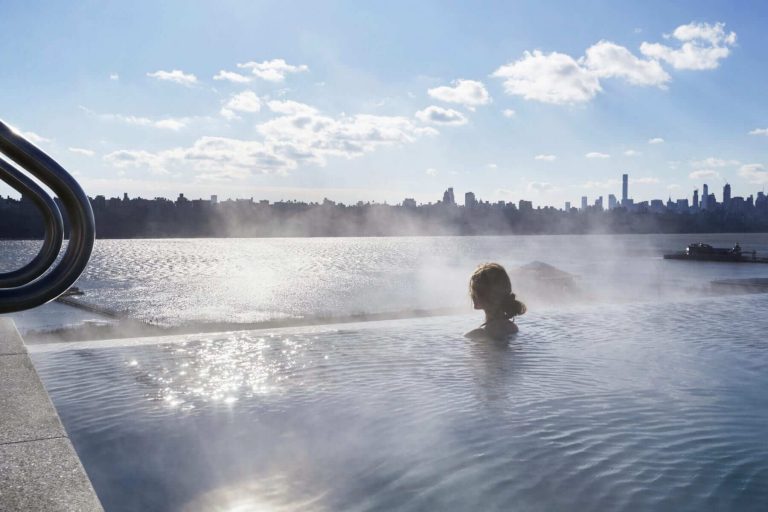Pool Resurfacing Orlando: Rising cost trend in Central Florida
In recent years, there has been a noticeable increase in the cost to resurface a swimming pool in Orlando and throughout the Central Florida area — approximately 5% per year since 2020.
The average price to resurface a medium sized 14x28ft 400sqft pool from 2020 to 2024 rose from approximately $3,500 to over $4,500. Initial cost increases in 2020 were driven by the COVID-19 pandemic. Temporary closures of manufacturers and suppliers caused material shortages, increased labor costs, and spiked demand for outdoor living services. Many homeowners began working remotely and turned their focus on home improvements.
the same time, Florida experienced a surge of out-of-state homebuyers, which fueled further demand for home improvement projects i.e., new pool construction and pool resurfacing.
2025 Pool Resurfacing Cost Breakdown (Orlando Area)
Here’s what you can expect to pay in 2025 based on a average sized 14x28ft 400-square-foot pool:
Disclaimer:
|
Interior Finish Type |
Estimated Cost Range |
Expected Lifespan |
|
Standard Quartz |
$4,620 – $5,300 |
10+ years |
|
Standard Pebble |
$5750.00 – $7,500 |
15+ years |
Prices vary depending on pool size, depth, finish color, access, features, surface prep, and contractor.
These prices are only expected to continue rising due to economic factors such as inflation, increased tariffs, shortage of laborers and a sustained high demand for Pool Resurfacing in Orlando and in the rest of Central Florida.

How to Get the Best ROI from your Pool Resurfacing
To ensure a strong return on investment, it’s important to make smart decisions during your pool resurfacing. Here are three key areas to focus on:
Hire an Experienced Pool Contractor
Hiring the right contractor is critical. Choosing the wrong
one can cost you more in the short and long term due to poor application or
surface failure from improper installation. Some contractors may not be around
to assist with issues that arise years later — leaving you stuck with costly
repairs.
Ensure Proper Surface Preparation
Surface preparation is vital to a successful resurfacing
project. Ideally the old pool finish should be chipped out completely, down to the
original pool shell. This ensures the new finish is applied thicker and directly on to the rough and porous pool shell allowing for proper adhesion. Although this step adds to the upfront cost, it
protects your investment by reducing the risk of delamination and future
surface failure.
Choose the Right Interior Finish
The pool you choose to go with directly impacts the longevity of your pool:
- A standard quartz finish typically lasts 10+ years with proper care you can increase the longevity even further.
- A pebble finish can last 15+ years, making it a smarter investment
for long-term ROI, durability and peace of mind.
Our Final Piece of Advice
If your pool needs to be resurfaced, the best time is now. Delaying the project will result in even higher costs in the near future.
Taking action today secures better pricing and safe guards the long-term value of your pool to maximize your ROI return on investment.
Answers to questions you may have about this article
It is not always necessary to chip-out the existing pool finish unless you currently have delaminated areas in the pool surface or your pool contractor finds acoustic delamination. In most cases we can prep the existing surface, apply the bond coat and resurface over it.
The cost of the chip-out depends on the following.
– Size and depth of your pool
– The amount of layers that need to be removed
On an average pool approx. 14x28ft/400sqft a chipout in Orlando and Central Florida will cost between $2300-$2500.00



